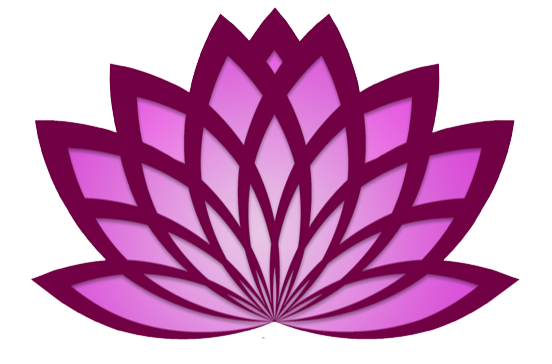
The pursuer–distancer dynamic is one of the most common and painful relationship communication issues couples face—and it’s almost always rooted in unhealed childhood attachment wounds.
Do You Feel Like You’re Always Chasing Your Partner—or Always Being Chased?
If you’ve ever felt trapped in a cycle of emotional push and pull with your partner, you’re not alone.
This dynamic doesn’t just erode connection. It actively blocks the emotional and sexual intimacy that most couples deeply crave.
Let’s break it down: where it comes from, how it shows up, and what you can do to finally shift it.
What Is the Pursuer–Distancer Dynamic?
The pursuer–distancer dynamic is a survival strategy that couples fall into—especially under stress or emotional disconnection.
- The pursuer craves closeness, communication, and reassurance. When things feel off, they lean in.
- The distancer craves autonomy, space, and emotional regulation. When things feel tense, they pull away.
This isn’t a matter of one person caring more than the other. It’s two different nervous systems reacting to perceived emotional threat. One moves toward to soothe the fear of abandonment. The other moves away to avoid overwhelm or rejection.
And round and round it goes—creating a cycle of disconnection, resentment, and confusion.
Where It Comes From: Attachment Wounds in Relationships
Most of us didn’t learn how to do secure, emotionally attuned relationships. We learned survival strategies.
If you’re the pursuer, you may have:
- Grown up with inconsistent caregivers—present one moment, emotionally unavailable the next
- Learned to stay attuned to others’ moods as a way to stay safe
- Developed anxiety around abandonment or disconnection
If you’re the distancer, you may have:
- Had caregivers who were intrusive, critical, or emotionally unsafe
- Learned to shut down or self-soothe in isolation
- Developed discomfort around emotional vulnerability or being “needed” too much
These early experiences create attachment wounds that follow us into adulthood—and show up loudest in romantic relationships.
How the Pursuer–Distancer Dynamic Shows Up in Romantic Relationships
Here are a few real-life examples of this cycle in action:
 Post-Argument Shutdown
Post-Argument Shutdown
- Pursuer: “We need to talk about what just happened.”
- Distancer: “I need space.”
- Pursuer: Feels abandoned and pushes harder.
- Distancer: Feels smothered and retreats further.
 Sexual Disconnection
Sexual Disconnection
- Pursuer: Initiates sex to feel emotionally close.
- Distancer: Feels pressured and shuts down.
- Pursuer: Interprets rejection as “I’m not wanted.”
- Distancer: Feels inadequate and withdraws more.
 Emotional Intimacy Breakdown
Emotional Intimacy Breakdown
- Pursuer: “Why don’t you ever open up to me?”
- Distancer: “You’re always so intense.”
- Result: Both feel misunderstood and unloved.
These aren’t just communication breakdowns. They’re nervous system collisions rooted in old protective patterns.
Why This Dynamic Hurts Emotional Intimacy in Relationships
The pain of the pursuer–distancer cycle is that both people are trying to feel safe and connected—but their strategies keep backfiring.
- The pursuer’s need for connection activates the distancer’s need for space.
- The distancer’s need for space activates the pursuer’s fear of abandonment.
This creates a loop of unmet needs, emotional fatigue, and unresolved tension.
And without conscious intervention, it can erode trust, passion, and even lead to emotional shutdown or affairs.
How to Break the Pursuer–Distancer Dynamic and Rebuild Emotional Intimacy
This isn’t about blame—it’s about awareness. Healing the pursuer–distancer dynamic starts with each partner taking responsibility for their own reactions and needs.
If you’re the Pursuer:
- Practice self-soothing before initiating intense conversations.
- Pause and ask yourself: Am I reacting from fear or presence?
- Express needs vulnerably, not forcefully.
“I feel disconnected and would love to reconnect” lands better than “Why are you ignoring me?”
If you’re the Distancer:
- Don’t ghost emotionally. Ask for space with reassurance.
“I want to come back to this, but I need 30 minutes to ground myself.” - Notice when shutdown is a protective reflex, not a conscious choice.
- Make small moves toward vulnerability. Eye contact. Touch. A simple “I hear you.”
As a couple:
- Name the pattern out loud. Awareness is the first disruptor.
- Develop shared tools for conflict repair, emotional regulation, and timing.
- Seek help. A relationship coach or private couples retreat can help you break toxic patterns and replace them with emotional attunement and trust.
Final Thoughts: From Reactive to Relational
The pursuer–distancer dynamic isn’t a sign your relationship is doomed. It’s a sign that your nervous systems are still trying to protect you in the only way they know how.
With healing and intention, you can move from reactivity to relational safety.
You can learn how to be both close and free.
Connected and autonomous.
Present and safe.
You just have to stop dancing the same painful steps—and learn a new rhythm, together.
If this dynamic is showing up in your partnership, I can help. My private couples retreats are designed to untangle old attachment wounds and help you build a new foundation of emotional intimacy, trust, and pleasure.

Leave a Reply